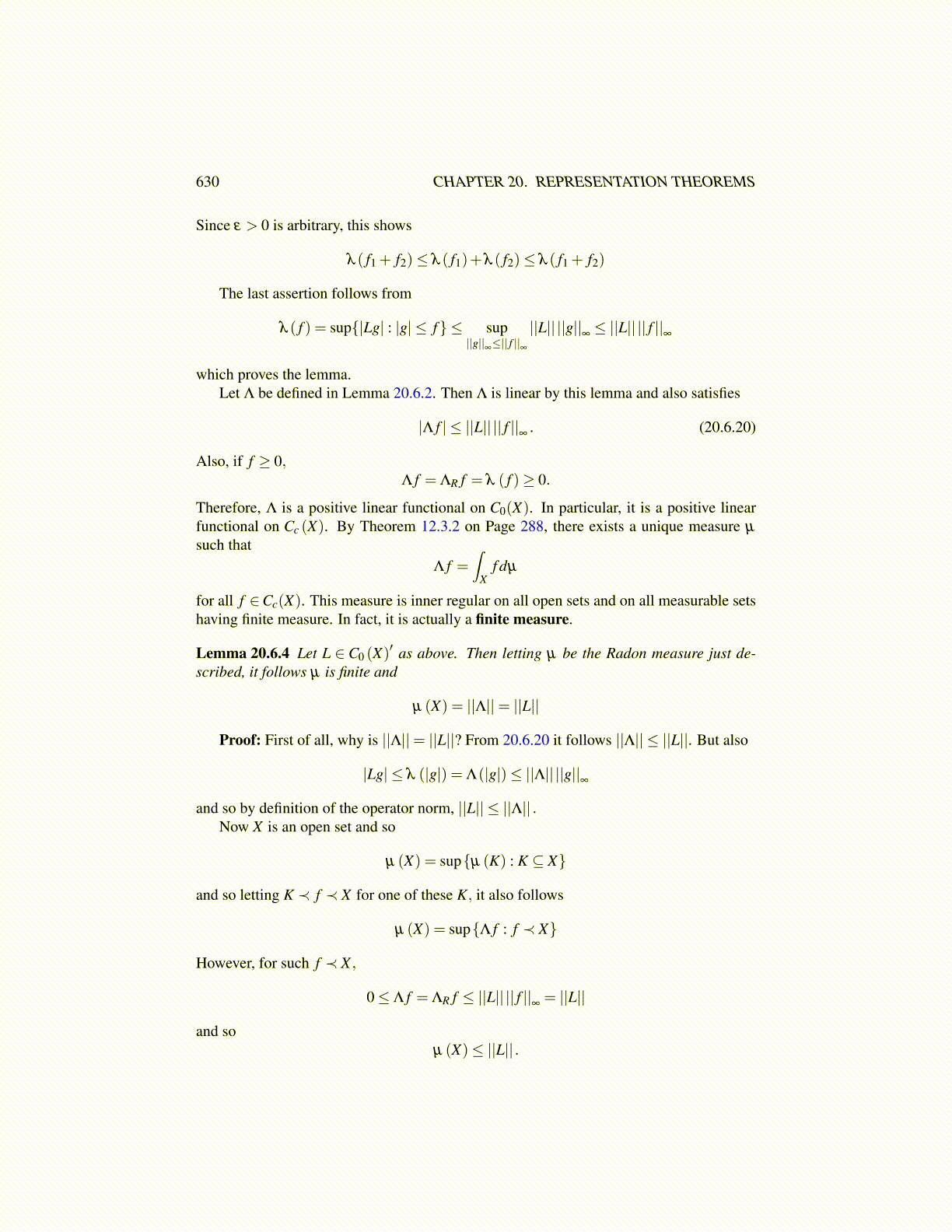
630 CHAPTER 20. REPRESENTATION THEOREMS
Since ε > 0 is arbitrary, this shows
λ ( f1 + f2)≤ λ ( f1)+λ ( f2)≤ λ ( f1 + f2)
The last assertion follows from
λ ( f ) = sup{|Lg| : |g| ≤ f} ≤ sup||g||∞≤|| f ||∞
||L|| ||g||∞≤ ||L|| || f ||
∞
which proves the lemma.Let Λ be defined in Lemma 20.6.2. Then Λ is linear by this lemma and also satisfies
|Λ f | ≤ ||L|| || f ||∞
. (20.6.20)
Also, if f ≥ 0,Λ f = ΛR f = λ ( f )≥ 0.
Therefore, Λ is a positive linear functional on C0(X). In particular, it is a positive linearfunctional on Cc (X). By Theorem 12.3.2 on Page 288, there exists a unique measure µ
such thatΛ f =
∫X
f dµ
for all f ∈Cc(X). This measure is inner regular on all open sets and on all measurable setshaving finite measure. In fact, it is actually a finite measure.
Lemma 20.6.4 Let L ∈ C0 (X)′ as above. Then letting µ be the Radon measure just de-scribed, it follows µ is finite and
µ (X) = ||Λ||= ||L||
Proof: First of all, why is ||Λ||= ||L||? From 20.6.20 it follows ||Λ|| ≤ ||L||. But also
|Lg| ≤ λ (|g|) = Λ(|g|)≤ ||Λ|| ||g||∞
and so by definition of the operator norm, ||L|| ≤ ||Λ|| .Now X is an open set and so
µ (X) = sup{µ (K) : K ⊆ X}
and so letting K ≺ f ≺ X for one of these K, it also follows
µ (X) = sup{Λ f : f ≺ X}
However, for such f ≺ X ,
0≤ Λ f = ΛR f ≤ ||L|| || f ||∞= ||L||
and soµ (X)≤ ||L|| .